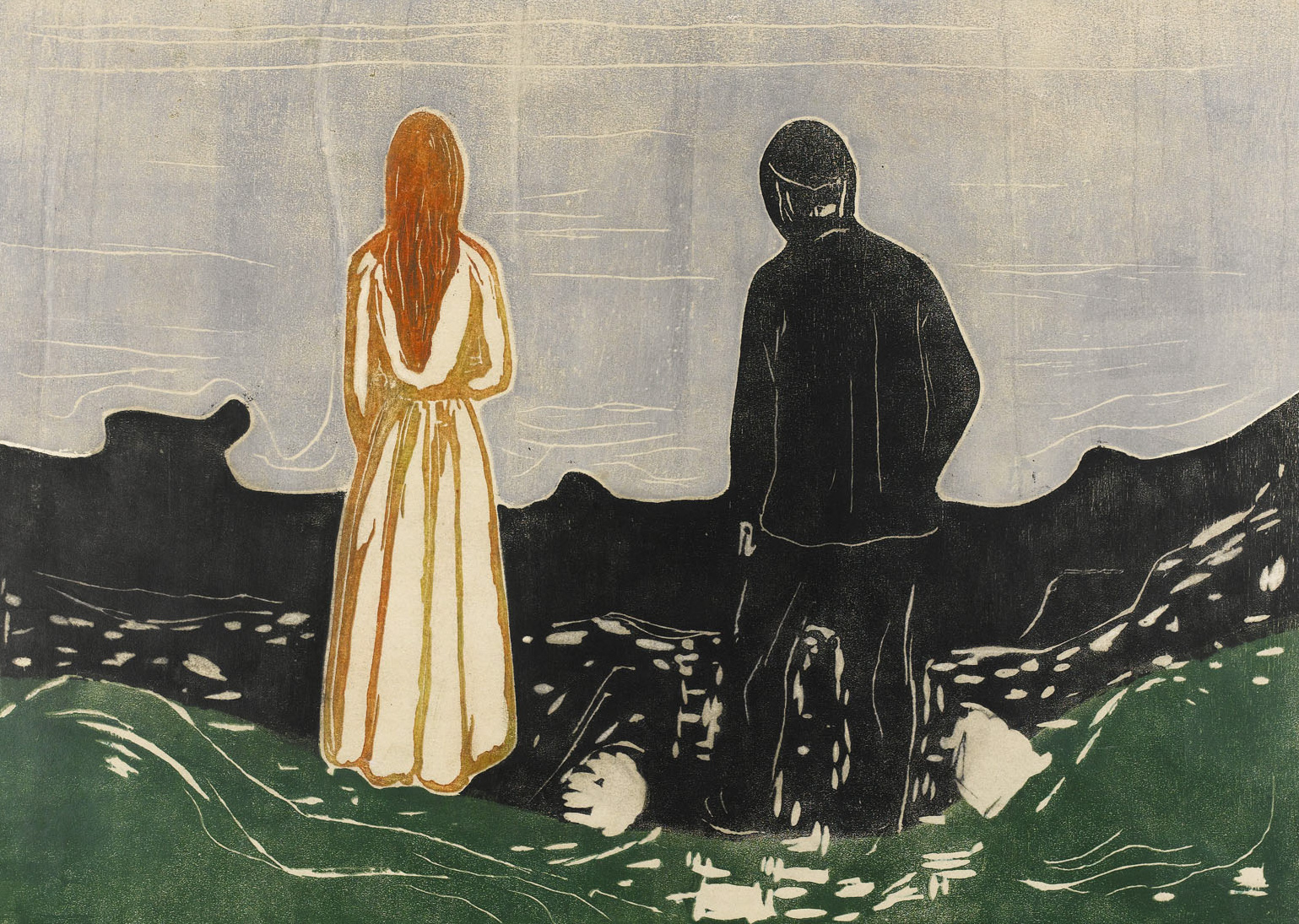On the Shore
 Edvard Munch, Two Human Beings. The Lonely Ones, 1899, color woodcut on paper. Private collection, © Artists Rights Society (ARS), New York
Edvard Munch, Two Human Beings. The Lonely Ones, 1899, color woodcut on paper. Private collection, © Artists Rights Society (ARS), New York The shoreline was an important motif for Munch, living as he did on or near the coast of the Oslofjord most of his adult life. Munch depicted a particular curving shoreline in his paintings, drawings, and prints from the 1890s through the 1930s. It became a recurring theme in his work, one he identified with the “perpetually shifting lines of life.” In some depictions, the shoreline itself was the subject of a moonlit evening, and in others it was a backdrop for human emotion. The shoreline featured most prominently in Munch’s works, depicting themes of melancholy, human isolation, and physical separation. The Norwegian writer Sigbjørn Obstfelder (1866–1900) wrote in 1896 of Munch’s visual abilities: “he sees in wavelengths; he sees the shoreline weave next to the ocean…he sees women’s hair and women’s bodies in waves.” By setting his depictions of separation, attraction, and loneliness against the winding edges of the fjord, Munch infused his subjects with vitality. The shore became an active agent in Munch’s depictions of nature.
